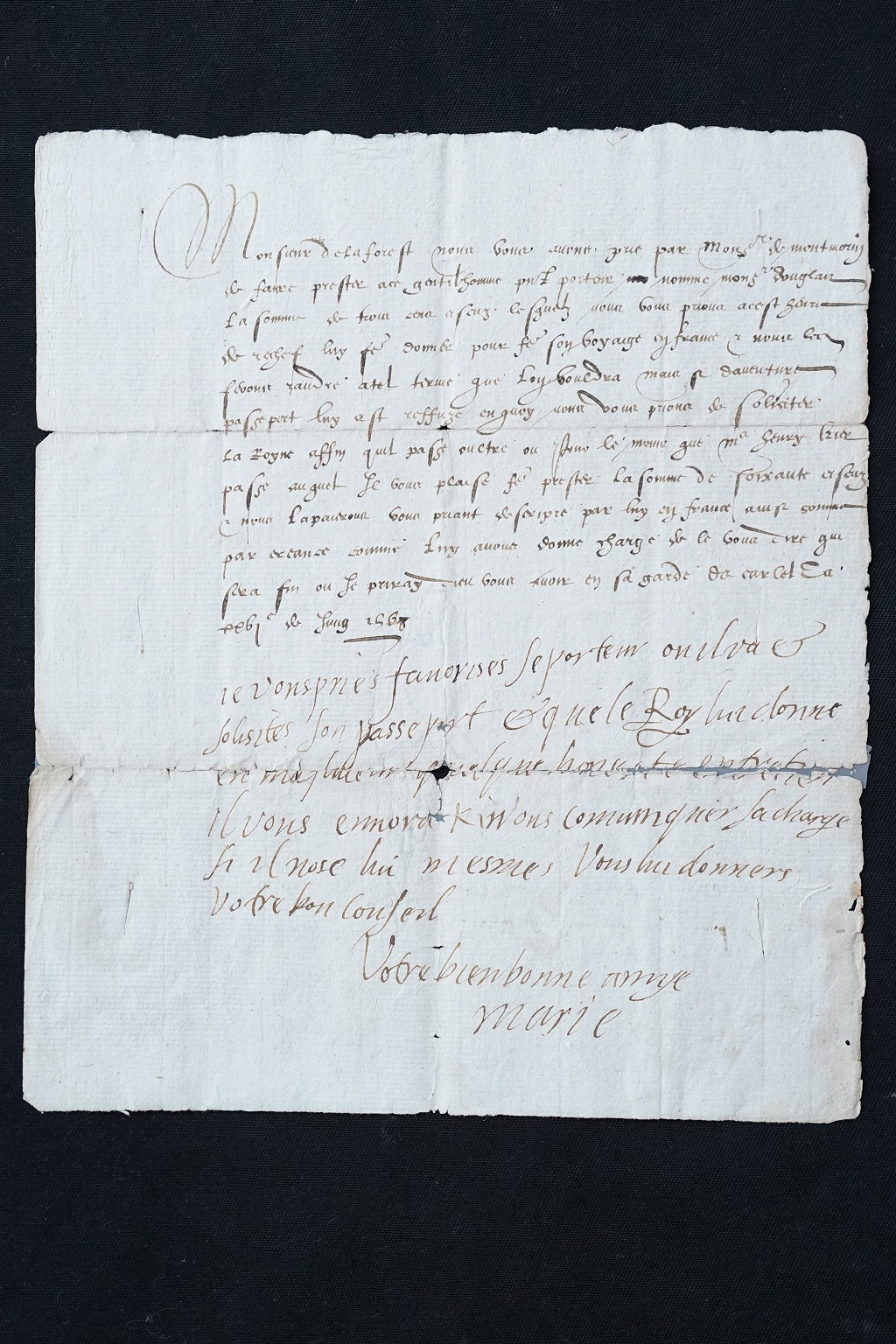A letter written more than four centuries ago, featuring the handwriting of Mary Queen of Scots, is to be sold live and online by fine art auctioneers Lyon & Turnbull next Wednesday, February 2.
It is thought that the letter could fetch between £14,000 and £18,000, when it goes on sale in Edinburgh.
The epistle is an appeal by Mary Queen of Scots to the French ambassador in England to allow the safe passage of Scottish nobleman, George Douglas, to France. The letter was written in Carlisle Castle two months after her daring escape from Lochleven Castle in Perthshire on May 2 1568, where she had been imprisoned for nearly a year following a forced abdication in favour of her infant son, James VI.
Mary’s escape from Lochleven had been aided by George Douglas and his cousin, William Douglas. She went to England to seek refuge from her cousin Queen Elizabeth I, but was apprehended by Richard Lowther, Deputy Governor of Cumberland, and escorted to Carlisle Castle. Officially, she was a free woman, but she remained under armed guard.
The daughter of aristocratic French noblewoman, Mary of Guise, who became regent of Scotland in place of Mary, the young Queen was brought up in France, moving there at the age of five. She went on to marry Francis II, the heir to the French throne.
Their marriage took when place when Mary was only 15 and Francis only 14 at the Cathedral of Notre Dame in Paris.
Widowed by the age of 17, she returned to Scotland in 1561 and ruled Scotland for the next four years. She remarried in 1565, this time to her cousin, Lord Darnley with whom she had her son, James. Darnley was murdered in 1567.

A letter signed by Mary, Queen of Scots (Photo: Stewart Attwood)
Protestant Elizabeth feared Catholic Mary’s claim to the throne and was imprisoned in a number of different castles and grand houses her for nearly 20 years, ostensibly as a result of an enquiry into Darnley’s murder which implicated Mary (later believed to be based on forged papers).
By helping to ensure George Douglas’ safe journey to France, Mary hoped he would intercede on her behalf with the French King to help secure her freedom. Mary, however, would never be free and was beheaded in Fotheringay Castle in Northamptonshire on 8th February 1587.
The letter presented for sale asks the French ambassador to Queen Elizabeth I to lend George Douglas, the bearer, 300 écus (gold coins) and to negotiate with the French royal family to secure George’s trouble free passage.
Cathy Marsden, Rare Books, Manuscripts and Maps Specialist at Lyon & Turnbull said: ‘It is rare for a document with Mary’s handwriting to come up for auction. Having custody of this fragile letter is quite special.
‘There are 12 lines written by a secretary, and additional six lines in Mary’s own hand. The letter is signed, “Votre bien bonne amye, Marie”, which translates as “Your very good friend, Mary”.
‘Given Mary’s unique place in history we anticipate a lot of interest in this sale.’
For more details visit Lyon & Turnbull HERE.
TAGS

